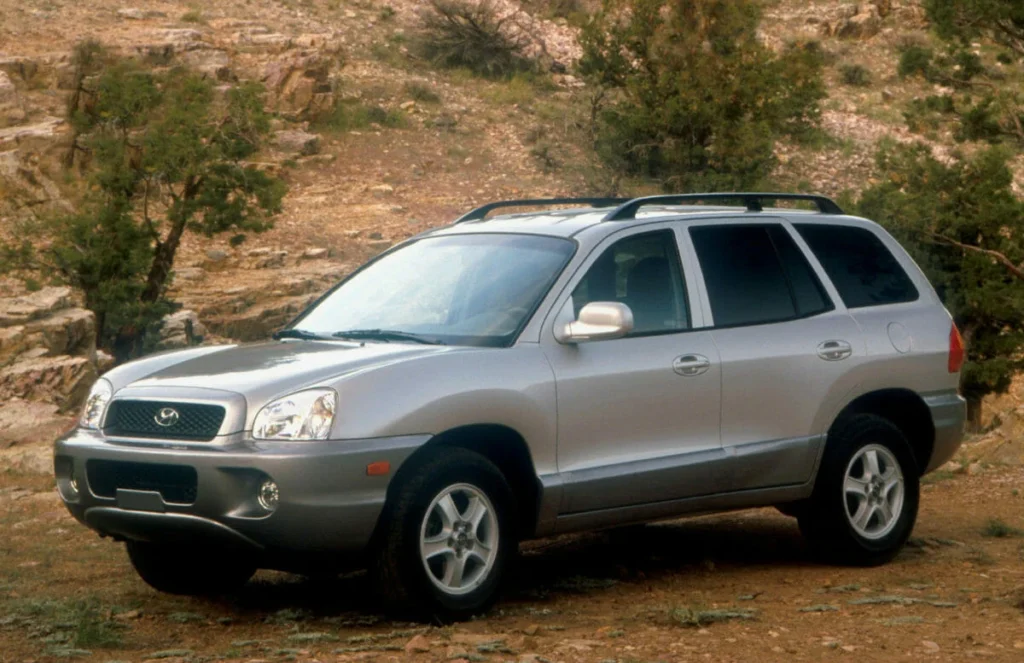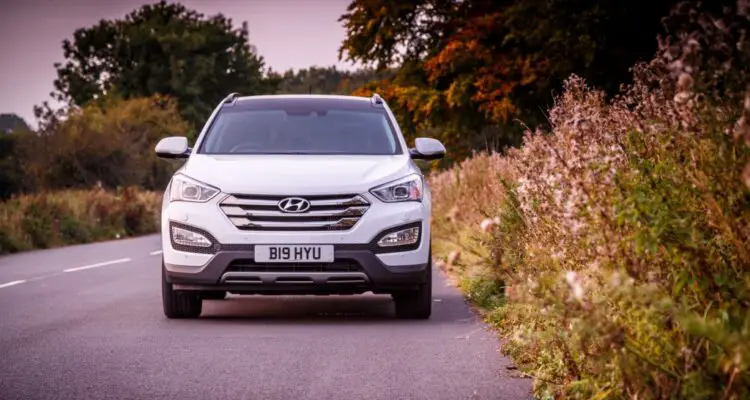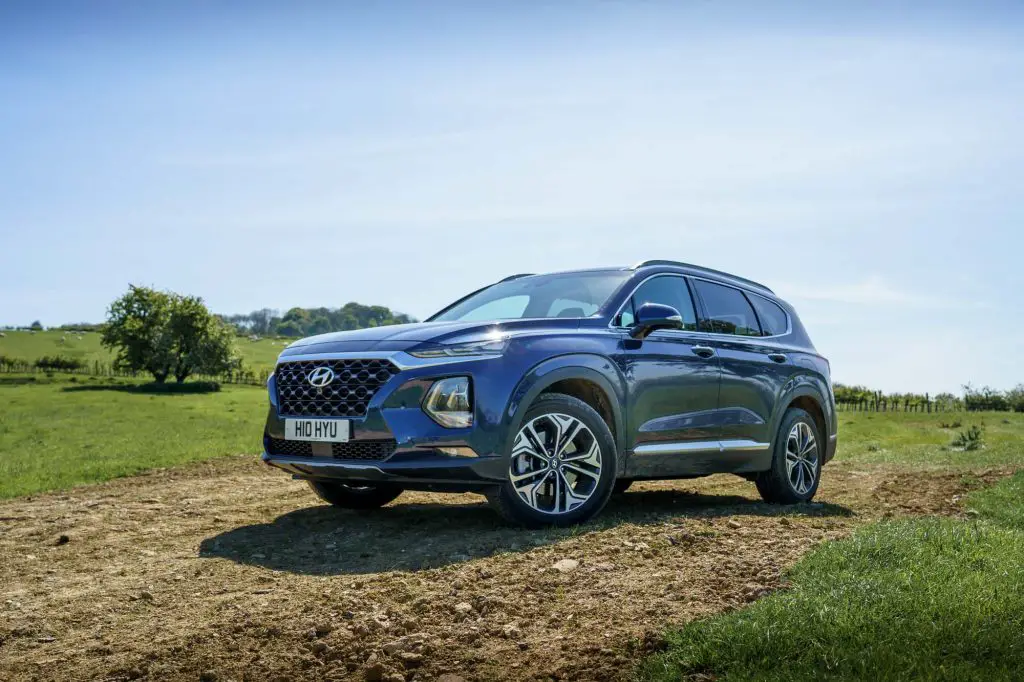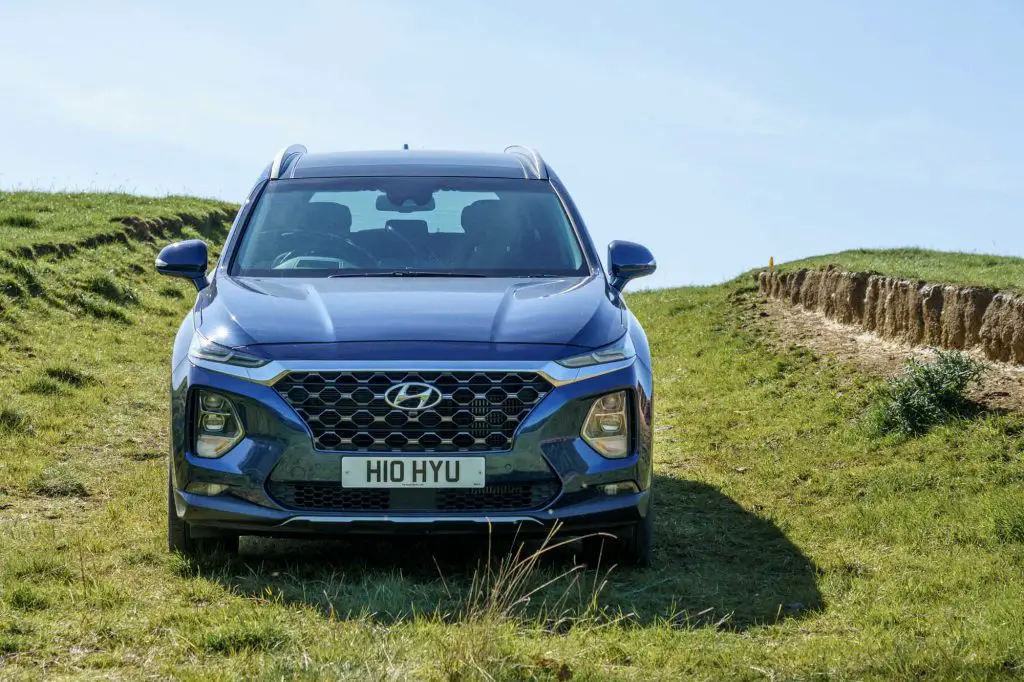In order to avoid picking the worst Hyundai Santa Fe years, we’ve ranked the best Hyundai Santa Fe models for every generation.
You will learn which are the best years to buy a Hyundai Santa Fe, as well as which are the worst years to buy a Hyundai Santa Fe.
This guide offers years of data on Hyundai Santa Fe’s reliability, based on reliable sources like NHTSA, VehicleHistory, and consumer reports.

By breaking down Hyundai Santa Fe’s best and worst years, we’ll be able to find out the common issues, necessary recalls, and standout features of the vehicle.
It’s time to get started.
Hyundai Santa Fe Generations
Hyundai Santa Fe, initially introduced to the market in 2001, has quickly become one of the market’s most popular crossover SUVs because it offers comfort, utility, and affordability.
A new generation (SM) of the Hyundai Sonata was introduced with a 2.4-liter four-cylinder engine or more powerful 2.7-liter V6, as well as side-impact airbags and antilock brakes, demonstrating Hyundai’s commitment to providing value-packed vehicles.
From 2001 to the present, we showcase all generations of the Hyundai Santa Fe.
| Generation | Years |
| 1st generation (SM) | 2001-2006 |
| 2nd generation (CM) | 2007-2012 |
| 3rd generation (NC) | 2013-2018 |
| 4th generation (TM) | 2019-2023 |
It is important to understand the differences between these generations, as each generation often undergoes significant changes and updates.
Hyundai Santa Fe Best, Neutral, and Worst Years
In order to determine the best and worst years for the Hyundai Santa Fe, we consider a variety of factors, including, but not limited to:
Afterward, a table categorizes which models belong to each generation as the best, neutral, and worst.
| Generation | Best Years | Neutral Years | Worst Years |
| 1st generation (SM) | 2006 | 2004 2005 | 2001 2002 2003 |
| 2nd generation (CM) | 2011 2012 | N/A | 2007 2008 2009 2010 |
| 3rd generation (NC) | 2015 2016 2018 | N/A | 2013 2014 2017 |
| 4th generation (TM) | 2019 2020 2023 | N/A | 2021 2022 |
A neutral year is a year that is neither spectacular nor has significant flaws, offering a balance between functionality and reliability.
It is crucial to understand that certain factors, such as NHTSA recalls, have an adverse effect on a car’s dependability score, as they often indicate a widespread problem.
Taking a look back at Hyundai Santa Fe’s best, neutral, and worst years would be helpful.
Best & Worst Years for Hyundai Santa Fe 1st Generation (2001-2006)
Introducing the Santa Fe in 2001, Hyundai aimed to combine affordability with good performance in its SUV.

In Hyundai Santa Fe terms, 2006 is the best model of the generation, while 2001-2003 are the worst models.
The Best Years: 2006
Compared to other years of this generation, 2006 was Hyundai Santa Fe’s best year with significantly fewer complaints and recalls reported to NHTSA.
There are two engines to choose from this year: a 2.7L Delta V6 or a 3.5L Sigma V6, paired with a 5-speed manual or a 4-speed/five-speed automatic.
With a 2.7L V6, the 2.7L offered 17 city mpg and 23 highway mpg, which was commendable for the time.
In terms of interior features, the model didn’t impress the market with advanced technology, but it did stand out thanks to standard amenities like air conditioning, power windows, and door locks.
There were notable safety additions this year, including anti lock brakes and side-curtain airbags.
In spite of this, there were a few issues. Occasionally, owners reported problems with the electrical system as well as minor problems with the fuel system.
The Neutral Years: 2004, 2005
During the 2004 and 2005 model years, Hyundai managed to maintain a balanced performance and reliability matrix for the Santa Fe.
Those available engines are a 2.4L 4-cylinder and a 2.7L V6, which offer respectable power but decent fuel economy. The V6 engine with automatic transmission delivers 18 mpg in the city and 24 mpg on the highway.
Hyundai Santa Fe 2004 transmission problems were not characterized as widespread breakdowns or widespread problems.
While the GLS trim is more expensive, it offers decent interior amenities like cruise control and a good stereo system, as well as available front-side-impact airbags for improved safety.
As with the 2004 Hyundai Santa Fe, the 2005 Santa Fe did not present an alarming spike in issues, but neither did it present a notable leap in technological or performance advances, thus placing them in a neutral position.
The Worst Years: 2001, 2002, 2003
There were relatively many NHTSA recalls and owner complaints in 2001, 2002, and 2003, so you should steer clear of these years when it comes to Hyundai Santa Fe models.
Hyundai Santa Fe models from 2001 and 2002 suffered from problems with the electrical system, engine, and suspension.
A regular stalling of the 2.7L V6 engine led Hyundai to recall vehicles equipped with crankshaft position sensors, posing not only an inconvenience but also a safety concern.
The 2001-2006 Santa Fe models were also plagued by issues with the rear trailing arm cracking due to corrosion, leading to recalls intended to address the problem.
In 2003, Hyundai Santa Fe brake problems led to notably poor braking performance; it became synonymous with brake problems.
To address the ABS sensor malfunctions that negatively affected braking distances on 2003 and 2004 Hyundai models with 3.5L engines, 4WD, and ABS systems, Hyundai initiated recalls.
The NHTSA has issued recalls and complaints for the Hyundai Santa Fe in 2001, 2002, and 2003.
Best & Worst Years for Hyundai Santa Fe 2nd Generation (2007-2012)
Featuring an all-new unibody design and a noticeably increased aesthetic appeal, Hyundai’s Santa Fe made a leap into its second generation.

There are two best years for Hyundai Santa Fe – 2011 and 2012. Avoiding the models from 2007 to 2010 is recommended.
The Best Years: 2011, 2012
What are the pros and cons of the Hyundai Santa Fe 2011 and 2012? Hyundai Santa Fe’s best and most reliable years in the second generation have been 2011 and 2012. The vehicle has fewer recalls and complaints as well as high ratings from platforms like Consumer Reports.
There were a variety of powertrain options available in these years, including a 2.4L Theta II 4-cylinder engine that provided 175 hp and a 3.5L Lambda II V6 engine that provided 276 hp.
Fuel economy is impressive for a 2.4L engine, achieving 20 mpg in the city and 28 mpg on the highway.
In addition, Bluetooth, steering-wheel audio controls, SiriusXM satellite radio for a free month trial, and navigation for the Limited were all added to the list of technology amenities.
In terms of safety, stability control, side airbags on the front seats, curtain-style front airbags, active headrests, and hill descent control provide additional layers of protection.
It was reported that some Hyundai engines had stalled, but Hyundai proactively recalled models in order to address worn connecting rod bearings.
The Worst Years: 2007, 2008, 2009, 2010
What are the years to avoid buying a Hyundai Santa Fe? As a result of numerous owner complaints and recalls reported to NHTSA, the years 2007 to 2010 are the ones to avoid at all costs when it comes to the Hyundai Santa Fe.
Its electrical and fuel systems, brakes, and engine were among the many systems that suffered failures in 2007.
There was a problem with the valve cover gasket leaking oil onto the alternator, which resulted in the alternator failing.
In some cases, owners were left stranded due to malfunctions in Electronic Stability Control (ESC) and fuel sensors.
As a result, Hyundai launched numerous recalls to address persistent issues, such as a malfunctioning stop lamp switch resulting in an illuminated ESC malfunction light and an ABS module short circuit causing a fire hazard in the engine compartment.
In subsequent years, such as 2008 and 2009, fuel-related problems persisted, and fuel sensors continued to malfunction.
As well as jerking, hard shifting, and an unsettling clunking noise beneath the hood, the 2010 Hyundai Santa Fe suffered from transmission issues.
The NHTSA has recalled or received complaints related to the Hyundai Santa Fe in 2007, 2008, 2009, and 2010.
Best & Worst Years for Hyundai Santa Fe 3rd Generation (2013-2018)
As the Hyundai Santa Fe entered its third generation, it offered consumers a variety of economical and luxurious options, as well as a compelling design and feature set.

In terms of reliability and affordability, Hyundai Santa Fe’s best years are 2015, 2016, and 2018, because of numerous engine problems in those years.
The Best Years: 2015, 2016, 2018
The third generation Hyundai Santa Fe has excelled at J.D. Power, VehicleHistory, and Consumer Reports, and reported fewer issues and recalls than previous models.
In addition to the 3.3L Lambda II V6 engine providing 290 horsepower and 252 lb-ft of torque, the new models featured a 6-speed automatic transmission, resulting in 18 mpg in the city and 25 mpg on the highway.
As well as maintaining the reliability of its predecessor models, the 2018 model features advanced safety features, such as the standard rearview camera and Hyundai’s Blue Link system, which offers emergency assistance and other beneficial telematics services, in addition to maintaining the reliability of its predecessors.
In addition to heated rear seats, panoramic sunroofs, and an 8-inch touchscreen with navigation, the Ultimate Package blended comfort and technology.
The 2018 model encountered notable problems such as steering wheel detachment, which Hyundai addressed through recalls.
The Worst Years: 2013, 2014, 2017
Hyundai Santa Fe models of 2013, 2014, and 2017 have the most problems in this generation. This period saw many safety, steering, and engine problems. You should avoid it like the plague.
It was reported by Hyundai Santa Fe owners that the 2013 model was plagued by engine problems, including overheating, excessive oil consumption, and misfiring.
Additionally, the right front axle shaft was recalled as it was prone to fracture and pose a safety risk.
The recall was prompted by an ABS short circuit which could have created a fire hazard within the engine compartment.
Several reports of engine failure and clunking noises from the steering column emerged from the 2014 Hyundai Santa Fe, while widespread reports of engine failures emerged with the 2017 model.
Recalls and complaints related to the Hyundai Santa Fe from 2013, 2014, 2017 can be found at the NHTSA website.
Best & Worst Years for Hyundai Santa Fe 4th Generation (2019-2023)
Introducing the fourth generation of Hyundai Santa Fe marks a pivotal moment in the car’s evolution. Its refresh in both appearance and mechanical components signals the automaker’s commitment to contemporary automotive advancements.

It is best to avoid Hyundai Santa Fe years 2021 and 2022 in this generation, as they are the worst.
The Best Years: 2019, 2020, 2023
Its best and most reliable years come in 2019, 2020, and 2023, when Hyundai Santa Fe is equipped with the latest technology and safety features and has quite good owner ratings from platforms such as J.D. Power, Consumer Reports, VehicleHistory, and Cars.com.
An eight-speed automatic transmission is available on both the 2.4L Theta II inline-4 engine and the 2.0L Smartstream G2.0 turbo-4 engine in the 2019 Hyundai Santa Fe. Both engines produce 185 horsepower each.
The addition of safety features like forward collision warnings with automatic emergency braking, adaptive cruise control, and attention warnings added another layer of safety to the vehicle.
The Limited and Calligraphy trim levels of the 2020 Hyundai Santa Fe further enhanced this feature by including leather seating surfaces, premium door sill plates, and Harman Kardon premium audio.
The Worst Years: 2021, 2022
In the fourth generation, the Hyundai Santa Fe years 2021 and 2022 are categorized as the years to avoid due to several recalls concerning the transmission and engine.
Because of widespread engine failures, the Hyundai Santa Fe 2021 was criticized for its reliability and safety.
In response to numerous recalls, numerous problems were addressed, including complete loss of drive power caused by oil pump failures and fire hazards caused by fuel leaks at pipe connectors.
There have been reports pointing to engine performance and transmission problems for the 2022 Hyundai Santa Fe, including erratic shifting and unresponsive acceleration.
Hyundai Santa Fe complaints and recalls for 2021 and 2022 can be found at the NHTSA website.
Best & Worst Hyundai Tucson Years | Years To Avoid
Best & Worst Hyundai Elantra Years | Years To Avoid
Conclusion
With Hyundai Santa Fe’s intricate journey in mind, it is apparent that 2015, 2016, and 2018-2020 are the best years of the Hyundai Santa Fe, providing outstanding reliability and comfort.
